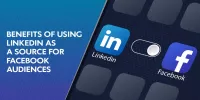When you promote your business on Facebook one day you will think if it is possible to reduce costs of ads. The only way to do so is do your best setting your ad campaign. You will need to choose an audience which is most likely be interested, create a super-performing ad, optimize your whole campaign in order to decrease the CPM (cost per thousand impressions). Cutting CPM is the actual goal when talking about reducing Facebook ads costs as in the meantime you want to keep the ad reach and click-through rate at the optimal level or increase it.
Facebook advertising costs depend on many factors described in this article so let’s now see how to act to pay less getting more.
The eternal pain of advertisers is often the audience. Its size, location and interest rate will certainly influence ad costs. The audience you choose should engage with your ad, rather than just skip it. The bigger click-through rate, the cheaper conversions and less CPM.
So you have to know your target audience and track the campaign’s results to make changes. Use campaign Insights to eliminate people pertaining to certain age groups, location and other parameters of audience that do not bring results.
Find out also the best-performing hours for running your ads. Insights in Facebook Ads Manager provide you with the information which days and hours are a win-win for your ad campaign. You can choose to “Run ads on a schedule”. This will let you show your ads only when people are most likely to see them. However, remember that results might differ because of the time of the year. For example, winter months are always much more expensive because of holidays.
A sure way is using lookalike audiences. A lookalike audience is a way to reach new people who are likely to be interested in your business because they’re similar to your best existing customers, - says Facebook. It supposes that Facebook has some info (a list of your customers) to rely on defining users to show your ads to, so lookalike audiences will cost you less. To create lookalike audiences Facebook uses such data as user behavior, interests, age, gender and location,pages liked and ads clicked.
The Lookalike percentage is optional - you can choose from 1-10%, while 1% is most closely matching the audience. The size of such an audience also depends on location - a NYC based lookalike will be obviously larger than a Monaco audience.
As a follow-up on audience choice, to decrease your ad spend you should consider using an Audience Overlap tool. This free Facebook tool lets you check if audiences you’re going to target would compete with each other since we all know how Facebook’s ad auction works. You need to upload your audiences and make sure they’re not overlapping to avoid bidding against yourself.
Another free tool you will need to save on Facebook advertising is Facebook Pixel. A piece of code provides you with information which ads perform better, how users interact with your ads, and lets you create a dynamic sales funnel. It tracks new leads, purchases, those who abandoned your cart without completing the order, add-to-cart and many other specified actions and custom events.
A sure thing you have to do is control the budget spend. Facebook aimes at maximum revenue no matter the cost, so if you don’t care how much to spend it’ll spend it all. Consider using a value-based approach of targeting to reach a larger and more specific audience. In Facebook Ads Manager, try to select optimization for clicks and payment for clicks. After several days, view and analyse your ads performance. In case the CTR is high ( about 1% or more), switch to optimize for clicks, pay for impressions.
As Facebook’s ad algorithm is designed to spend the whole campaign’s budget by the scheduled end date, you better keep that in mind planning your ad campaign duration. The longer your campaign is to be running, the longer the algorithm has to efficiently test and deliver your ads to the right audience, and thus draw out the pace in which it spends your media dollars.
You have to refresh your ad creative at least once in two weeks. This is necessary in order to avoid ad fatigue - people start skipping your ad after seeing it already several times. The more stimulating your ad, the more people will interact with it. And the more people interact with your ad, the more Facebook will show it for the same price decreasing CPM.
Another recommendation is to A/B test your audience, different copy and visuals. When the ads have low engagement, advertisers are charged more.
There are not so many marketers using video ads, but Facebook still allocates more of its ad space to video than to any other type of media. This combination of decreased demand and increased supply results in a meaningful decrease in CPMs. Knowing not many businesses can produce a more or less decent video, Facebook has a tool that lets create a video from scratch, for example a slideshow of products. With a video campaign, you can also “build custom audiences for people who have watched a specific % of the video.
One thing you have to realize and accept is that your work here will never actually be over. You'll always be competing for the customers at the marketplace, so keep making a better product and optimizing your campaign.

